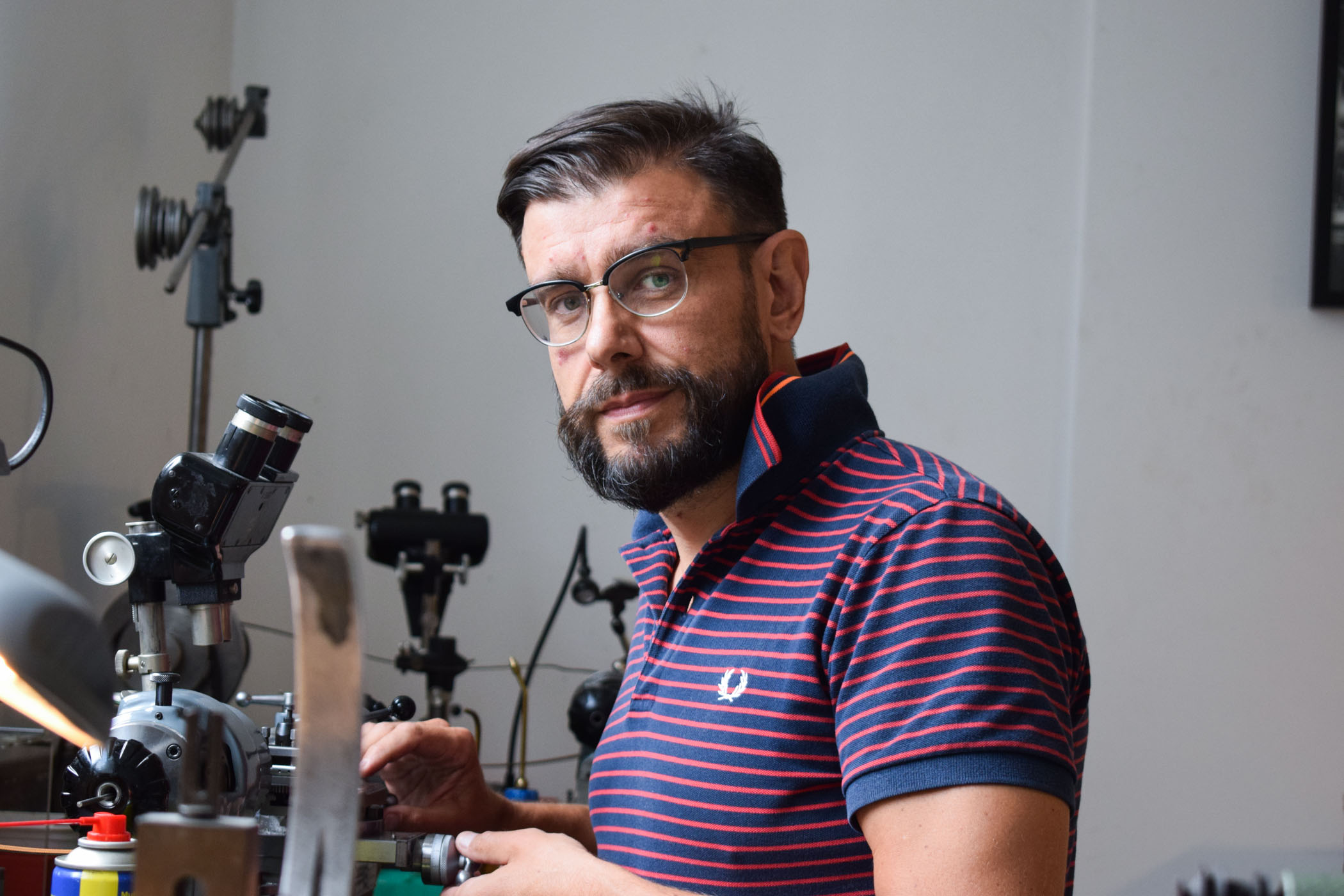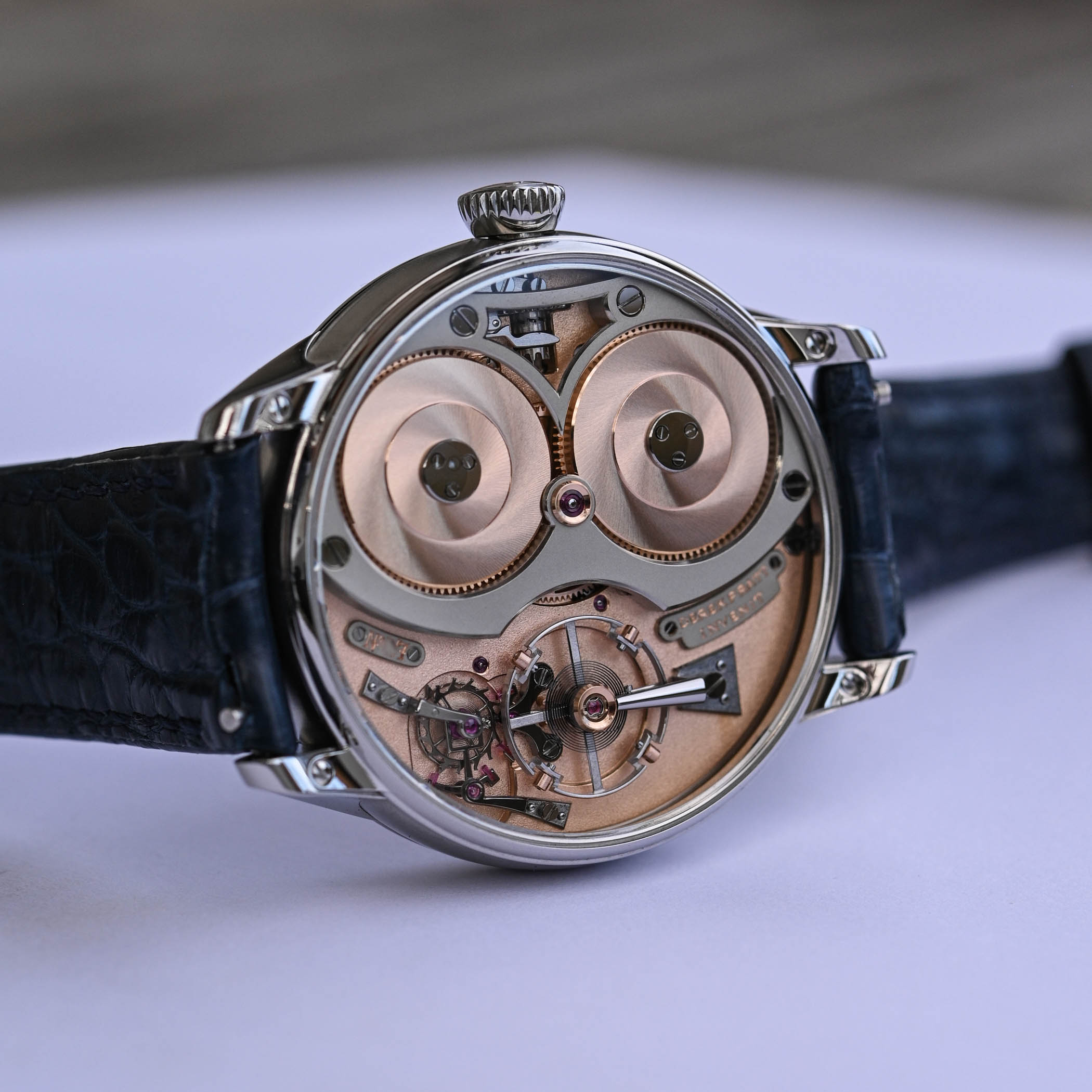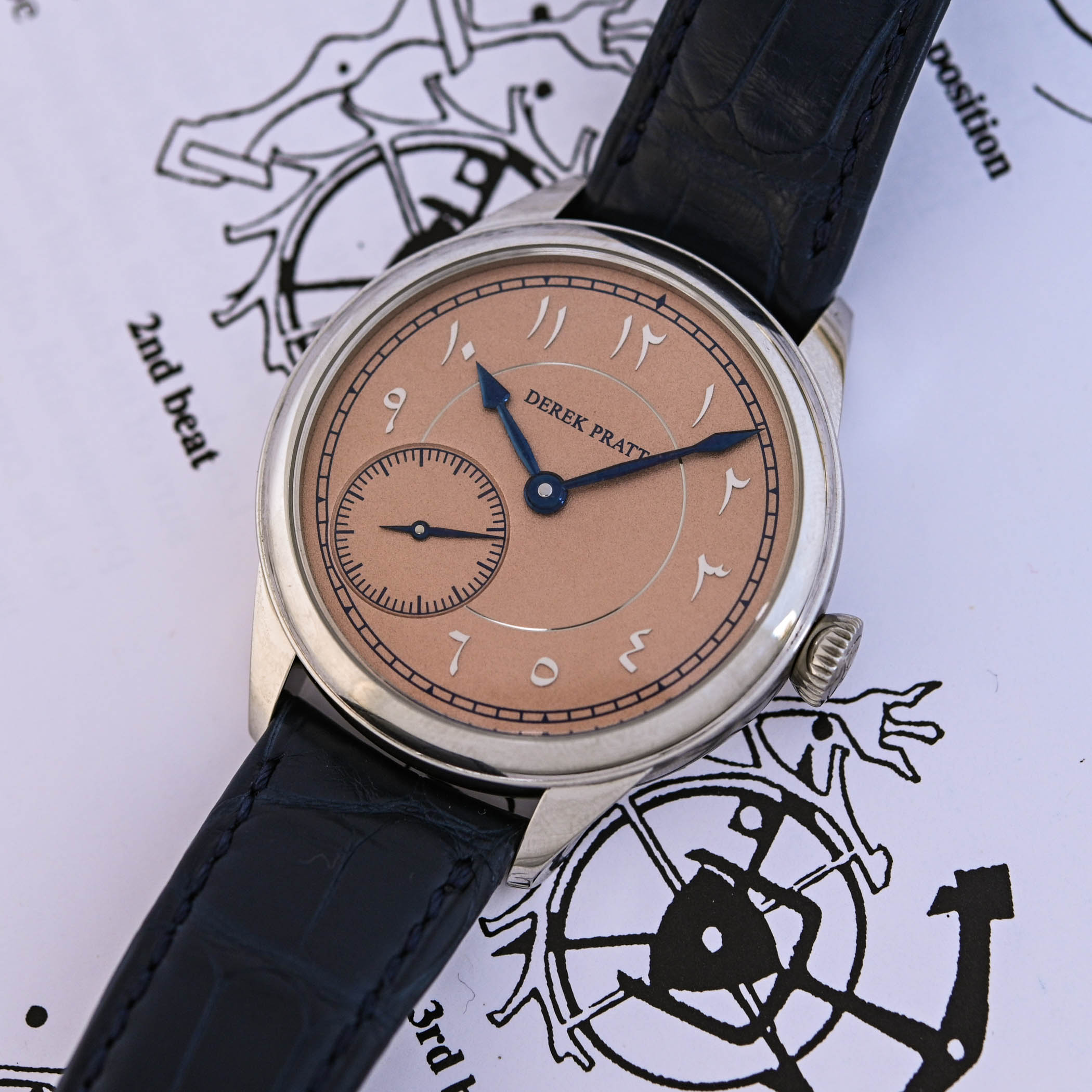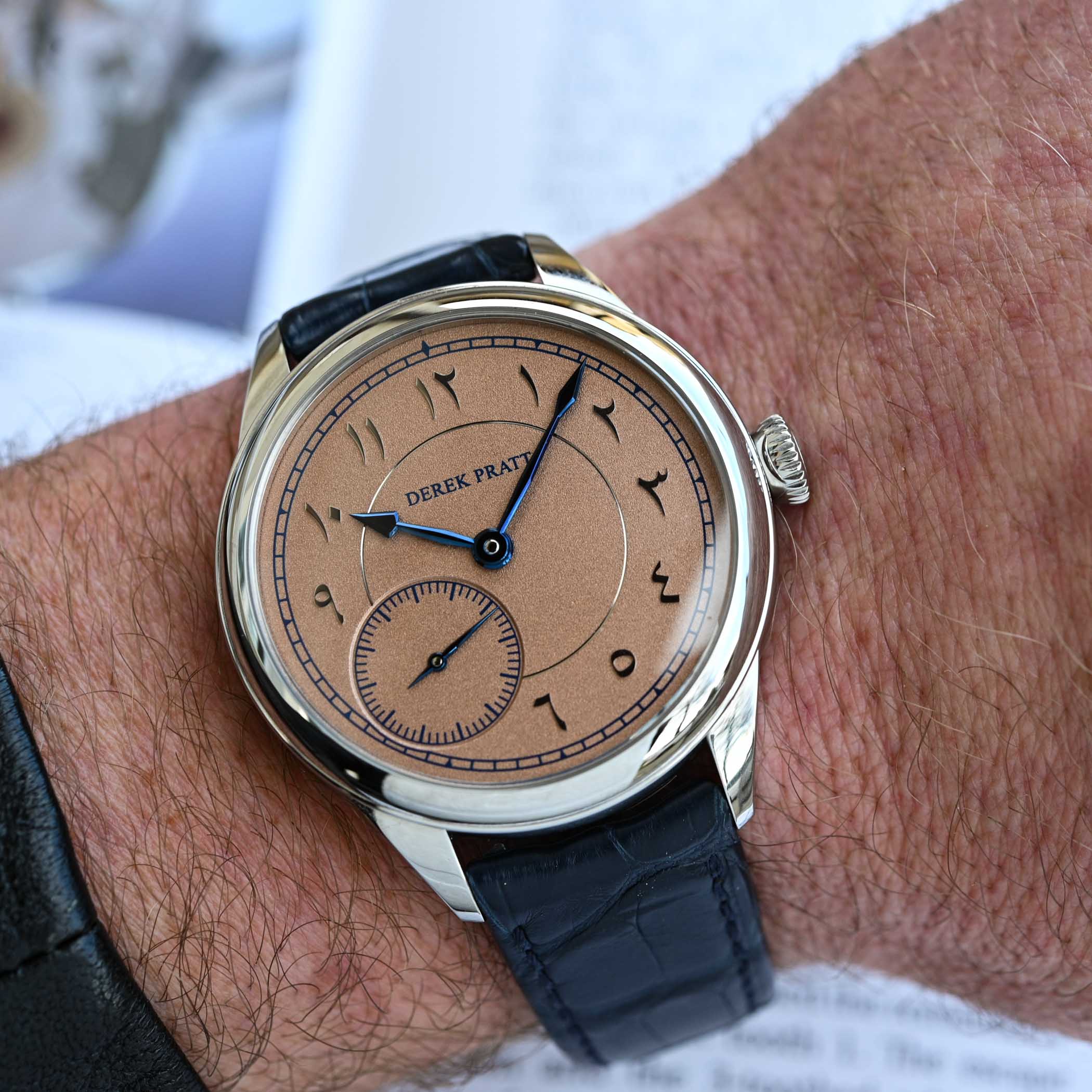A Rare Encounter with the Superb Derek Pratt Remontoir d’Egalité by Luca Soprana
Getting our hands on a rare watch crafted by Luca Soprana with the full support of Derek Pratt’s family that shows true respect for one of the popes of indie watchmaking.

Some names carry more historical weight than others. Names like Daniel Roth, George Daniels or even Gerald Genta and Philippe Dufour represent a time when independent watchmaking was far from the hype and fame it is associated with today. These were times when the industry was on the verge of collapse. These were times when these men could only survive thanks to the generosity of a handful of collectors and auction houses, restoring ancient clocks and pocket watches. This was even before the creation of the AHCI. In England, during the 1970s and 1980s, George Daniels and Derek Pratt created incredible movements and timepieces like true artisans in almost complete confidentiality. And while Daniels saw his popularity grow impressively – mostly thanks to auctions and his successor Roger W. Smith – Derek Pratt (1938-2009) remains one of the unsung heroes of indie watchmaking. But maybe not for long. We’ve had the chance to handle a splendid watch bearing his name, finely executed by Luca Soprana with the support of Pratt’s family and worthy of the watchmaker’s legacy.
Derek Pratt, the watchmaker
Derek Pratt, born in 1938 in Petts Wood, England, is mostly known to collectors for his work at Urban Jürgensen alongside Peter Baumberger. There’s more to this man, often under-appreciated, as he could well be considered one of the founding fathers of independent watchmaking. Or at least one of the men who has driven watchmakers to the path of modern independent watchmaking.

According to the British Horological Institute book Derek Pratt – Watchmaker, Pratt first founded a company with his childhood friend Goldsmith in 1960, an engineering company called Pratt and Goldsmith. Pratt’s watchmaking journey started like so many back then as a restorer of ancient clocks and pocket watches. This period of his career gave him the opportunity to master most of the traditional techniques of watchmaking, a time when CNC machines and CAD were not available, and things were done by hand, the old way. He even learned the art of guilloché, which, at a certain point in his career as a restorer, led to his encounter with Peter Baumberger, one of the main dealers of antique timepieces.

Baumberger would later acquire the Danish brand Urban Jürgensen in the late 1970s, where Derek Pratt was appointed technical director from 1982 to 2005. Alongside the restoration of antique Urban Jürgensen pocket watches, Pratt also developed several series of wristwatches with complications based on Frederic Piguet movements – mostly the Ref. 2 with perpetual calendar and moon phase and the Ref. 3 with an additional power reserve indicator – and with a signature element of Pratt, finely guilloché dials. His main achievement there is, without a doubt, the Oval pocket watch of 1991 with a tourbillon and a detent escapement.

Peter Baumberger entrusted Pratt with the development of a wristwatch with a detent escapement. This became one of his main technical challenges, and he was only able to produce a successful prototype in his later years. One of Pratt’s main achievements is the conception of a tourbillon with remontoir. Mounted inside the tourbillon cage, this remontoir (a constant force device) was truly ingenious and proved efficient. The most important component of this assembly is the Reuleaux triangle – which we will look at later in the article. This escapement was first seen in a series of Urban Jürgensen pocket watches. Pratt later worked on a watch combining a tourbillon with a double-wheel remontoir inspired by his friend Daniels.

One of Derek Pratt’s main tasks over his career was the recreation of John Harrison’s H4, the last of the marine chronometers produced by the clockmaker. A passion-driven project, Pratt’s health, unfortunately, started to decline (prostate cancer) quickly, and it became clear to him that he wouldn’t be able to complete the project. He handed the project over to Charles Frodsham & Co. in London, who terminated the watch in 2014, just in time to join a world tour of museums for the 300th anniversary of the Longitude Act.

Pratt passed away in 2009, leaving his mark on watchmaking, specifically in a small circle of highly seasoned collectors and a generation of talented watchmakers who form the indie scene we know today. That being said, his name is still alive, thanks to his widow, Jenny Pratt and some well-known names in the watch industry, such as Luca Soprana.
The Derek Pratt Remontoir d’Egalité by Luca Soprana
If Derek Pratt was known for his one-minute remontoir mounted in tourbillon cages, the idea of crafting a wristwatch with a stationary escapement took shape in late 2008. Steward Lesemann, an American watchmaker established in Switzerland, was approached by Pratt to give life to the project. Lesemann started to work on the development under Pratt’s mentorship in early 2009.
The concept was to have a movement with suspended twin barrels, with a sort of “motor barrel” configuration. These barrels would drive the Reuleaux triangle one-second remontoir positioned coaxially with the escape wheel. Lesemann presented Pratt with the first prototype before he passed away in 2009. His wish was that the watch might potentially be produced in a limited series… Steward Lesemann kept working on the project, crafting a watch with the third movement prototype, which was presented at the Derek Pratt Memorial Seminar held by the British Horological Institute in 2011.
In 2014, Luca Soprana (Lesemann collaborating at Soprana’s Atelier 7h38) took over the project with the blessing of Derek Pratt’s family. He embarked on a redesign of the movement. The outcome is this limited-edition series of seven watches crafted for the Perpétuel Gallery of Hamdan Al Hudaidi and Melika Yazdjerdi.

Situated near Neuchâtel, Luca Soprana operates as an independent watchmaker, with his Atelier 7h38 focusing on restoration as well as developing and producing movements for external clients. While some projects have been unveiled to the public, such as those for Jacob & Co. or Massena LAB, most are conducted behind the scenes. In his workshop, a handful of watchmakers work in the most traditional way, re-enacting century-old gestures on a set of old machines and tools… In essence, the perfect setting to keep the Pratt legacy alive.
The first thing to grab your attention with this evolution of the Pratt movement is its captivating beauty and apparent simplicity. This calibre has been designed to focus on the essentials as the gear train is concealed underneath the dial. The focal points are the two flying barrels, the remontoir, and the regulator, which are prominently displayed. Interestingly, the keyless works, typically positioned on the dial side, are instead visible on the rear of the watch.
The two barrels are “suspended”, meaning that they are not held under a bridge. The power reserve is limited to 36 hours by a Maltese cross stop work to ensure that the barrels consistently provide the remontoir with adequate driving force. The large balance wheel operates at a frequency of 18,000 vibrations per hour. It features 4 timing screws, and its hairspring has a Breguet terminal curve. The dead-beat second is directly driven from the remontoir pinion.
Fine workmanship and meticulous attention to detail are evident throughout. The regulator and remontoir stand out against the minimalist but beautiful grained decoration. Stepped bridges hold in place the escapement, balance and remontoir with its triangular ruby cam (a part that is extremely difficult to manufacture), fork and spring. Among these, the rounded conical cock is particularly noteworthy. Two plates are affixed to the movement: one bears the individual limited-edition number of the watch, while the other is inscribed with the caption “Derek Pratt Invenit” – which is a nod to Pratt’s signature on his movements “Derek Pratt, Invenit et Fecit” (a motto found on Breguet watches and, of course, on F.P. Journe watches).
Elegant, restrained, and meticulously handcrafted, the habillage echoes the movement. The 42.5mm case is fashioned out of brushed and polished stainless steel. The grained salmon dial is fitted with applied steel Eastern Arabic numerals paired with thermally blued steel hands. The alligator leather strap is fitted with a steel pin buckle.
As you may imagine, this exclusive limited edition of seven watches, which was presented a few months ago, was sold out a long time ago… but having the chance to get our hands on one of these, we thought it would be worth sharing this beauty with others. And who knows, we might see more Derek Pratt wristwatches in the future. At least, seeing this exceptional watch, we certainly hope so.















1 response
I like it.
A lot.